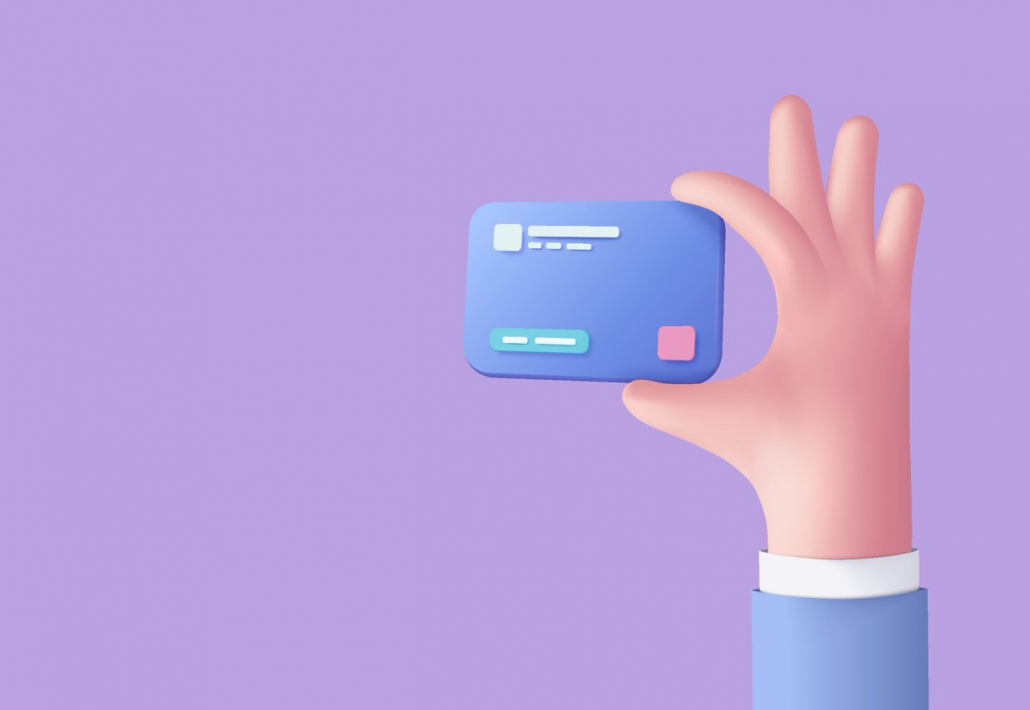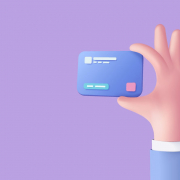Credit cards: navigating the crossroads of virtualization

Banks aim to keep up with consumer expectations in the credit cards segment. However, any major credit card issuer must thoroughly screen customers first. Digital wallet one thing, but a fully virtual credit card requires the automation of backend processes in a given market.
This article discusses:
- whether a virtual credit card will replace the traditional one,
- what the basic problem with plastic credit cards is,
- how to modernize bank operations,
- how we helped a bank achieve significant savings.
The credit card is a long-standing banking product that is evolving before our eyes. The balance transfers and allure of cash back rewards continues to draw users towards certain credit card offers, providing tangible benefits for every transaction made. Banks are vying for attention with promotions and personalized benefits to enhance their offerings and attract new customer groups. Financial institutions compete with the volume of transactions that can be performed without commission, the number of free ATM withdrawals, and even the mediums!
In an era where we use smartphones rather than wallets to make payments, is the traditional “plastic” on the decline? Will all cards be virtualized in the coming years? Turns out, it’s not that simple.
Behind what the customer holds in their hand – be it a piece of plastic or a phone with NFC payment activated – lie complex verification processes. From the perspective of the credit card provider, extending a line of credit represented by a physical credit card to a customer within an hour is a significant risk. A fully virtualized traditional credit card will only kick in once the entire backend of the verification process is also fully automated.
Credit card: from a metal tag to a hand gesture
The instrument of deferred payment, known as the credit card, has come a long way in personal finance. In ancient times, debts were recorded on clay tablets, and in the 1930s, trusted clients had access to metal tags. The first payment card was developed in 1958 by American Express. Bank of America followed in its footsteps, over time changing the somewhat awkward name BankAmericard to Visa. Subsequently, interbank cards emerged (1966 – today’s MasterCard after several name changes) as well as those accepted worldwide.
However, it was the technological changes that paved the way for the credit card to achieve real success. The breakthrough came in the ’60s with the idea of an IBM engineer attaching a magnetic strip to a piece of plastic with the holder’s data, on which these data were recorded. A reader was all that was needed for the seller to swipe the physical card, quickly access credit card details and execute the transaction.
The magnetic strip, however, was not sufficiently secure technology, as it allowed the scanning of cardholder data (so-called skimming). A physical card could also simply be stolen. The problem was solved by the microprocessor (1984) and then by the PIN number.
The technology that made credit card transactions much more convenient was NFC. The contactless solution first appeared in 1997 in Seoul, and between 2006 and 2008, it became well-established in the debit and credit card market.
Currently, payments made using credit card account for a significant portion of all cashless transactions (as reported by Forbes [Forbes, 2023], in the US in 2021, this was 28%). However, the statistics concerning them are globally diversified. As reported by the Statista portal (Statista, 2023), in countries where this means of payment is most popular, such as Norway, Canada, and Japan, as many as 70% of consumers have opted for cards. At the same time, in countries like Morocco or Bangladesh, the market penetration is only 0.2%.
A digital wallet or a virtual credit card will not change customer expectations though. Card payment disputes may occur in less than 1% of transactions, but they can have a major impact on the bank-customer relationship. A loyal consumer who uses their card and has joined a loyalty program has fulfilled their part of the bargain. They therefore expect the bank to meet their end of the deal. When they discover after some time that the discount is missing, the complaint engine kicks in. We covered this in our text on harnessing technology for bank complaint management.
Small piece of plastic, a major challenge for the environment
As technology has advanced, physical payment cards have become a problem for consumers. Without paying cash, they needed a wallet merely to store the card (online shopping included). It was a hindrance, and payers felt the need to free themselves from this cumbersome piece of plastic.
Moreover, the issue of plastic itself came into play. Payment cards are produced from very durable PVC material, which degrades considerably slower than a regular shopping bag or plastic bottle.
We’re talking about a colossal amount of pollution – every year, 6 billion cards are produced to replace expired ones and to issue new ones for newly opened accounts. Meanwhile, about 5.7 million tons of payment PVC ends up in landfills (FinTech, 2021).
This issue is particularly significant for Generation Z, of which 62% prefer to buy from sustainable brands (Forbes, 2020). To meet the needs of new consumers, card manufacturers started using recycled plastic and even issuing biodegradable cards, e.g., made of cornstarch or vegetables.
Digital payments grow in prominence
Even biodegradable cards are still objects that need to be carried in a wallet. The solution turned out to be phone payments, made possible by NFC technology. Since we always have our smartphones with us, making transactions has become incredibly simple. Statista estimates that in 2023, there will be 1.31 billion users of this payment method (Statista, 2023). Simultaneously, using NFC, we can also pay with a smartwatch, and in the future, even a band or a jacket, along with the evolution of wearable devices into a digital wallet.
Mobile payments use electronic payment platforms, which allow for instant shopping in stores and purchases online. These, however, are not owned by financial institutions. The most popular among them are PayPal, Apple Pay, and Google Pay.
An interesting feature in the world of payments is the proposal to use biometrics. These types of payments are being tested and piloted in various markets, although Japan is leading the way. In the Land of the Rising Sun, work is underway to introduce biometric payment cards that allow payment with a fingerprint, and even with your own face, simply by looking at a camera. Google is also developing a similar technology. Are virtual credit cards just round the corner?
Most banks or financial institutions operating on the market have evolved in line with the direction of product and channel development, and the bank’s IT structure has followed their course. However, the bank of the future will not be product-, but customer-oriented. As banking expert, advisor and futurist Brett King points out, “the best service in financial services happens in real-time and is based on customer behavior”. Switching to real-time operations is not easy in banking. Many institutions face enormous challenges on their way to the top. Why then is this journey worthwhile? We tried to establish it in our article about real-time banking.
Traditional or virtual cards: what to expect in the coming years?
Banks selling credit products linked to a plastic card could not remain idle in the face of advancing virtual payment methods. Hence the emergence of a virtual card. It is used for online transactions and for in-store transactions when linked to an electronic wallet like Google Pay or Apple Pay. Physical card is not necessary anymore.
Their operation, however, is essentially the same as when paying with a traditional card. It is based on generating a unique transaction number (called a token). This allows us to protect the original card number from interception. Even if there is a data leak at a payment intermediary (non-bank), which unfortunately happens quite often, our money will be safe. A virtual credit card also gives customers the ability to set spending limits or block it without affecting their creditworthiness. But there’s a catch: encouraged by the lack of a physical carrier, customers expect to get a virtual credit card from their bank “on the spot”. But as it turns out, it’s not that simple as account opening.
Virtual card calls for virtual back-office processes aka the missing link
From a formal perspective, a virtual card is the same product as any physical card. It is subject to precisely the same (very real) verification rules as a traditional one. Credit card issuers have in place a complex and multi-staged process (usually taking 2 to 3 weeks) – after all, we’re talking about the issuance of a payment instrument, not account opening.
During this time, the bank assesses the customer’s credit report, creditworthiness and approves the application at many levels. Unfortunately, for most banks, all these steps are still not fully automated, which prevents them from becoming instantly mass-produced. For example, if the credit check process is not automated via an interface, manual verification can take up to 2 days. In those banks where the process is automated, this process takes a few minutes.
In the era of transformation and automation of the new card issuance process, banks still rely on proven, secure verification procedures, even though they do not meet the customer’s primary expectation, i.e., instant issuance. Despite the risk of disappointing customers, this approach is more profitable for them in the long run. The situation will only change when key IT processes related to card issuance are adapted to handle a virtual card.
Case study: modernization of a credit card service system
An example of the extensive range of work required to modernize systems handling card payments is a project we implemented for one of the Polish banks.
The bank engaged us to work on modernizing the IT software that handles credit card payments. The operational merger of IT systems brought the bank significant savings in the IT area. The new credit card processing system (as a module of the central banking system) enabled the bank to better and more quickly adapt IT systems to changing business needs.
Credit cards are still standing
The scale of work needed to modernize banking architecture and digitalize internal processes shows that a virtual credit card will not replace traditional plastic any time soon. However, it is certainly a forward-looking banking product that has firmly established itself in the offerings of financial service providers and major issuers.
To learn more about our experience in optimizing IT architecture supporting credit card management, check out our case studies. If you have specific questions about card processes, book a technical consultation with us, no strings attached.

